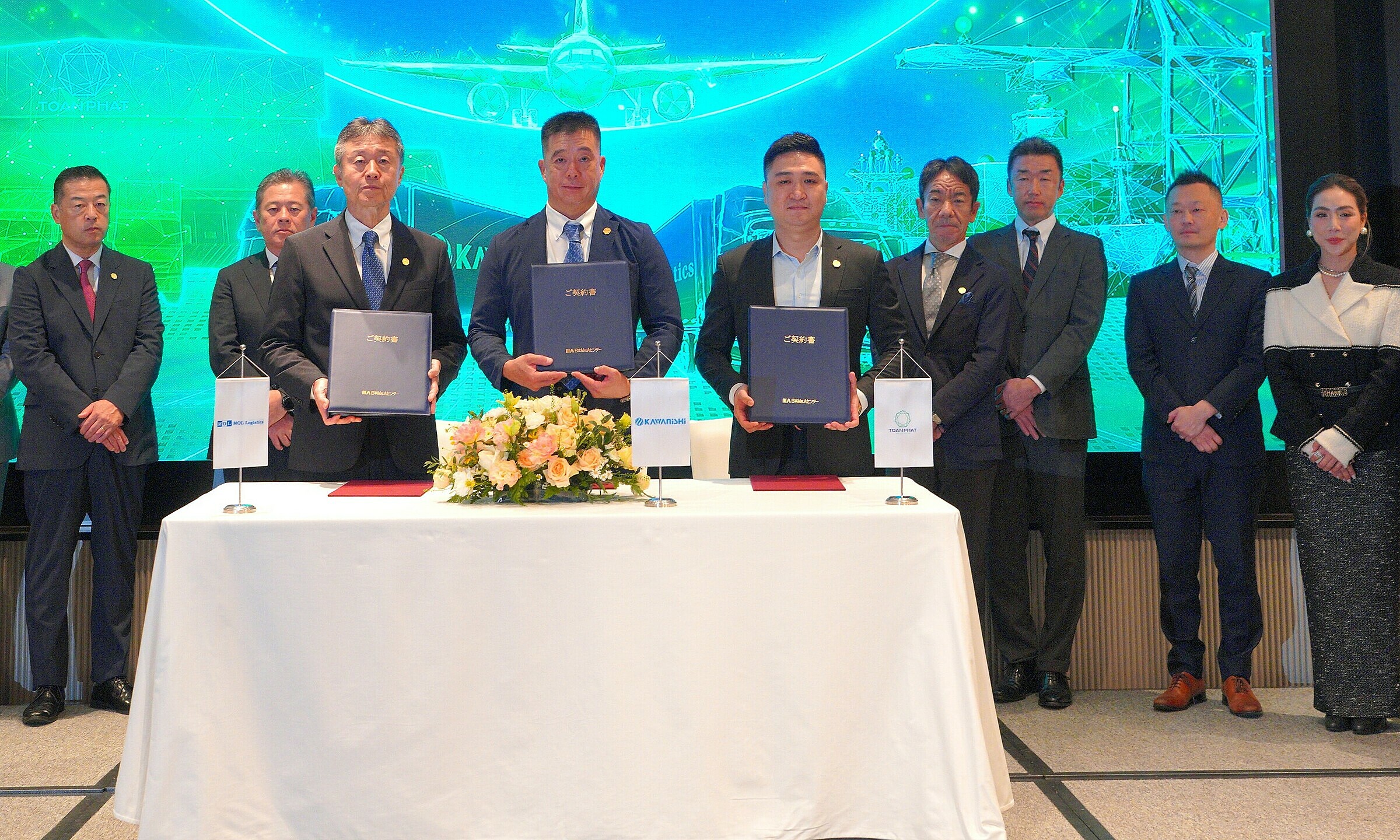Toan Phat holds a 10% stake in the new venture, MOL Logistics (a subsidiary of Mitsui O.S.K. Lines) owns 39%, and Kawanishi Warehouse Group owns the remaining 51%. The two Japanese corporations have become strategic shareholders in Toan Phat Warehousing JSC (TPL), jointly creating an integrated cold chain logistics hub to serve agricultural and seafood exports.
Vuong Hieu, chairman and CEO of TPL, described the model as "all-in-one": clients only need to deliver their goods to a single location for irradiation, storage, customs clearance, and container transport. "This streamlines the process for businesses, saving costs and time, while also reducing carbon emissions," he said.
This partnership addresses challenges faced by exporters for years, including shortages of empty refrigerated containers, rising logistics costs, and reduced product quality due to extended storage times. MOL Logistics has committed to prioritizing the transfer of empty containers from international shipping routes to Vietnam to alleviate the scarcity.
 |
The three companies signed a cooperation agreement to establish the Japanese-Vietnamese Mekong Logistics Hub in Ho Chi Minh City on the evening of 18/9. Photo: Thi Ha |
The three companies signed a cooperation agreement to establish the Japanese-Vietnamese Mekong Logistics Hub in Ho Chi Minh City on the evening of 18/9. Photo: Thi Ha
Toan Phat is currently a leading company in agricultural product irradiation, with a cold storage capacity of 11,000 tons, serving over 500 businesses regularly. The company is one of two in Vietnam recognized by the US Animal and Plant Health Inspection Service (APHIS) as qualified to irradiate fresh fruit for export to the US, with a capacity of 30,000 tons per year.
The involvement of Kawanishi, a logistics group with over 100 years of experience, and MOL, with its network of 138 offices in 26 countries, will help Mekong Logistics Hub standardize quality management processes according to international standards. The partnership also provides direct connections to a multimodal transport system and strategic ports like TCIT (Cai Mep) and HICT (Hai Phong).
The hub plans to offer a comprehensive range of services, from irradiation and storage to port-connected transportation. This will shorten export routes for Vietnamese agricultural and seafood products, reduce costs, and enhance competitiveness. With Vietnam aiming for USD 65 billion in agricultural, forestry, and seafood exports by 2025, this partnership is expected to become the core of an integrated logistics network for the region, bringing Vietnamese agricultural products to the world and enhancing brand recognition and quality.
Thi Ha












